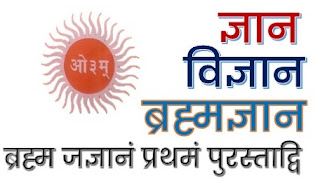
When we proceed with the enquiry process using the Brahmakara Vritti, the Real is
identified by three characteristics. These are interlinked, one following the other. The
seeker’s task is to shift his identity from the Unreal to the Real, using these three as his
guidelines to differentiate the thoughts that arise in his mind. The mind always needs to
have an object. It is extremely difficult to hold thoughts in the mind which are completely
free of the ‘object’ element as described above.
The Three Tendencies in Thoughts
1 i) Nishkalam: “without parts”. The mind has the natural tendency to break up the
whole and view it in its component parts. By nature the intellect is analytical, not
synthetical. It proceeds forward by analysis, not synthesis. By classifying objects the mind
obtains knowledge of them. Brahman, however, is without parts.
2a ii) Nirvikalpam: “free of differences”. Our mind also has the built-in tendency to
see differences between various things. It wants to know how one thing is different from
another. It then proceeds to name things so that their differences may be defined. It thus
gives reality to these differences. However, Brahman is free from differences, for
differences arise only in the Unreal realm of creation.
One of the big problems encountered by an aspirant during meditation is the
tendency to ‘objectify’ the Self. When the mind is asked to focus on the Self, the first
tendency is to imagine the Self to be an object of perception. This verse guides the aspirant
to avoid this tendency. “The Self is free from all differences and is without parts.”
The Upanishads contain numerous Mantras which are specially designed to make us
aware of this tendency of our mind. In these Mantras or verses, the Self is described in
terms that appear contradictory to our normal sense of perception. For example, the Self is
described as “bigger than the biggest” and “smaller than the smallest”.
2b iii) Niranjanam: “taintless”. Another tendency is to think of the Self as being
‘tainted’ by having certain qualities which really belong to the Ego but are understood as
appearing to belong to the Self. All these misconceptions may be overcome by meditation
on appropriate Mantras and similes given in the Upanishads.
For instance, the Self is compared to Akasha or space, which does not partake of any
qualities which the other elements may impart to it. Space remains taintless and unaffected
by the presence or absence of the other four elements, namely, air, fire, water and earth.
3-4 These two Padas re-affirm the goal that the seeker is striving towards in his
meditational practice. All this striving is done by the use of the single thought, “I am
Brahman” the Brahmakara Vritti. This is, indeed, like a “magic wand” in the mind of a
spiritual aspirant.















.jpeg)
.jpeg)
.jpeg)
.jpeg)
0 Comments